XRF Test Results for Bibs Glass Baby Bottle with Natural Rubber Nipple
Published: Saturday – August 5, 2023
This bottle was tested at the request of Lead Safe Mama readers. It tested non-detect for most of the common metallic toxicants that we look for (there were no detectable levels of Lead, Arsenic, or Mercury in any of the glass, plastic, or natural rubber components of this bottle that we tested)!
We did find trace (very low) levels of both Cadmium and Antimony in several tests done on the glass of the bottle (painted and unpainted areas.) While not ideal, this is a common finding – and the levels found are considered safe by all standards. The implications of these findings are discussed in detail below (in red) in the section of this article with the test results.
Please understand the following important points in reading this and other similar articles here:
- We do not recommend many products.
- If there is an article about a product on this website (any product), readers need to understand that that fact alone should not be misconstrued as implying any sort of endorsement or recommendation of the product — it is simply a write-up of the test results for that product, with a discussion of the implications of those test results, if metallic toxicants (poisonous “heavy metals”) are found.
- We are working on reporting XRF test results for as many baby bottles currently on the market as we have the opportunity to test — so that parents and other caregivers can review (and compare) the metals profile for each component of every bottle we have tested in order to make informed decisions for their children.
- We hope you will review the various choices along with the test results of those products and make an informed choice of which product(s) to use for your own child. Please do not ask us to make that choice for you.
- If we find unsafe and illegal levels of heavy metals in any child feeding product, we will clearly articulate those findings, and we will recommend not using that product [and, as time permits, we will also report the violation to the Consumer Product Safety Commission].
- We are linking each of these baby bottle testing reports on various bottles to the Lead Safe Mama Baby Bottle Guide – which can be found on this link. [If you need to reference this Baby Bottle Guide in the future, it can also be found in the header menu at the top of every page of the Lead Safe Mama website.]
We began this project as an advocacy initiative – after finding more than a dozen newly-manufactured baby bottles and other infant and children’s feeding products (manufactured and sold in 2023 or in the past 5 years) with unsafe levels of Lead – either in the form of Lead-painted measurement markings and decorations in the exterior paint on the glass, or in the form of other components that are high in Lead (for example the high-Lead “sealing dots” used to create the vacuum seal on many insulated stainless steel products – including insulated stainless steel baby bottles and sippy cups.)
Please scroll down to read the full test results for the bottle pictured. There were four separate “components” of this bottle (including painted and unpainted glass – each tested separately), and all were tested multiple times to confirm any test results we have reported.
The recommendation of Lead Safe Mama, LLC – across the board, when it comes to baby bottles – is that the best bottle choice – from a safety perspective (with respect to avoiding toxic heavy metals in children’s items) – is an unpainted, undecorated plain glass bottle, paired with a natural rubber nipple [assuming the child does not have an allergy to natural rubber, or any other issue with a natural rubber nipple].
- A second–best choice is a bottle with painted measurement markings or decorations that has been independently tested and has tested negative for toxicants in the paint, with a natural rubber nipple.
- Since a fed baby is best, if your baby is allergic to (or if your child refuses) natural rubber nipples, a third option as a good choice is an unpainted glass baby bottle with a silicone nipple.
- Please do be aware however that most silicone baby bottle nipples do test positive for traces of the heavy metal Cadmium – which is a known carcinogen. These trace-Cadmium found in baby bottle nipples to date have been, in all cases, levels that are considered safe by all current standards. Also important & relevant: silicone nipples should be swapped out for new nipples every 4 to 6 weeks (or if they start to get cloudy before then).
- If you have to choose between a glass baby bottle where there is trace-Cadmium in the glass (which is common), vs. one where there is trace-Cadmium in the nipple, trace-Cadmium in the glass is less concerning than trace-Cadmium in the nipple. In our experience, natural rubber nipples always test negative for Cadmium.
- Our baby bottle guide details which bottles have tested positive for traces of Cadmium (and in which component.)
*Given the testing we have done to date, we have (to date) recommended this brand or this brand or this brand of glass bottle – and then – if possible – swapping the nipple to a nipple made of natural rubber that fits the bottle you have chosen. Here is one example – and here’s a second example – of many possible natural rubber choices (although we have not confirmed that these work well with the specific bottles mentioned.) The natural rubber nipple of this bottle (along with the collar and cap components) can be purchased separately without the glass bottle, although I do not know if it is compatible with other bottle systems (it may be compatible given the apparently standard size and shape of the bottle.) The bottle tested was purchased on Amazon, but Amazon does not appear to be currently carrying the full bottle assembly.
For those new to this website:
Tamara Rubin is a multiple-Federal-award-winning independent advocate for childhood Lead poisoning prevention and consumer goods safety, and a documentary filmmaker. She is also a mother of Lead-poisoned children (two of her sons were acutely Lead-poisoned in 2005). Since 2009, Tamara has been using XRF technology (a scientific method used by the U.S. Consumer Product Safety Commission) to test consumer goods for toxicants (specifically heavy metals — including Lead, Cadmium, Mercury, Antimony, and Arsenic). All test results reported on this website are science-based, accurate, and replicable. Items are tested multiple times to confirm the test results for each component tested. Tamara’s work was featured in Consumer Reports Magazine in February of 2023 (March 2023 print edition).
*Amazon links are affiliate links. If you purchase something after clicking on one of Lead Safe Mama, LLC’s affiliate links we may receive a small percentage of what you spend at no extra cost to you.
FULL XRF Test Results for the Bibs Glass Baby Bottle Pictured Are Below
Here’s a Lead Safe Mama, LLC affiliate link for components of this bottle.
Reading #1) Unpainted Area of Glass
120-Second (Two-Minute) Reading
- Lead (Pb): non-detect
- Cadmium (Cd): 18 +/- 3 ppm
- Iron (Fe): 257 +/- 63 ppm
- Zinc (Zn): 14 +/- 7 ppm
- Zirconium (Zr): 839 +/- 15 ppm
- Niobium (Nb): 432 +/- 12 ppm
- Indium (In): 22 +/- 4 ppm
- Tin (Sn): 10 +/- 5 ppm
- Antimony (Sb): 12 +/- 7 ppm
- No other metals detected in consumer goods mode.
*Note: We tested both the painted and unpainted areas of this particular glass bottle in several areas, and tested multiple times to confirm the presence of both Cadmium and Antimony. The Cadmium and Antimony (at the levels found) are most likely trace contaminants of the glass and not – in any way – found at levels that would indicate they are added ingredients. I do not have a concern for the presence of trace Cadmium & Antimony in the glass of this bottle (especially at these very low levels); it is likely bound in the glass and non-leaching. The test result sets noted above and below are each one full test result set (not an average of multiple sets of test results.)
Reading #2) Painted Area of Glass – Black Paint
120-Second Reading
- Lead (Pb): non-detect
- Cadmium (Cd): 14 +/- 4 ppm
- Chromium (Cr): 10,500 +/- 400 ppm
- Iron (Fe): 97 +/- 58 ppm
- Copper (Cu): 2,850 +/- 72 ppm
- Zinc (Zn): 40 +/- 10 ppm
- Zirconium (Zr): 849 +/- 17 ppm
- Indium (In): 13 +/- 5 ppm
- Antimony (Sb): 19 +/- 9 ppm
- Platinum (Pt): 456 +/- 56 ppm
- No other metals detected in consumer goods mode.
*Chromium, Platinum & Copper are likely ingredients in the black paint (since all three metals were not found in testing the unpainted glass). Chromium is often a colorant for darker colors (blacks and browns.) The Antimony and Cadmium detected in this reading are likely in the glass (as noted above) as the paint was tested “in situ” – on the glass background of the bottle and the levels found are similar to reading #1 above.
Reading #3) Blush Colored Plastic of Cap Components
60-Second Reading
- Lead (Pb): non-detect
- Cadmium (Cd): non-detect
- Titanium (Ti): 18,500 +/- 500 ppm
- Iron (Fe): 1,924 +/- 69 ppm
- Nickel (Ni): 16 +/- 11 ppm
- Zinc (Zn): 11 +/- 6 ppm (found in first reading only)
- Barium (Ba): 205 +/- 89 (found in second reading only)
- No other metals detected in consumer goods mode.
Reading #4) Natural Rubber Nipple
60-Second Reading
- Lead (Pb): non-detect
- Zinc (Zn): 853 +/- 18 ppm
- Bromine (Br): 4 +/- 2 ppm
- No other metals detected in consumer goods mode.
~ End ~
Never Miss an Important Article Again!
Join our Email List








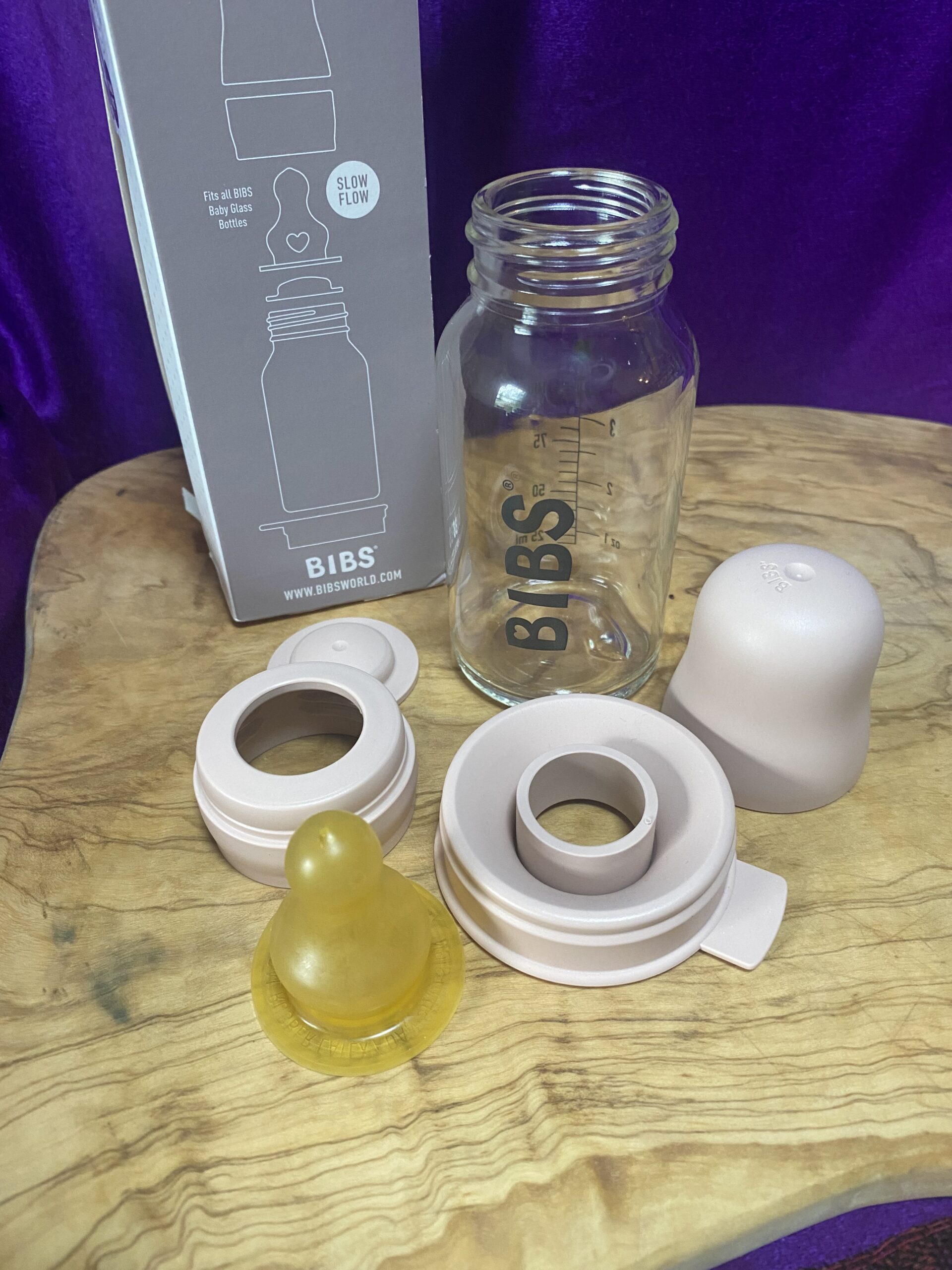
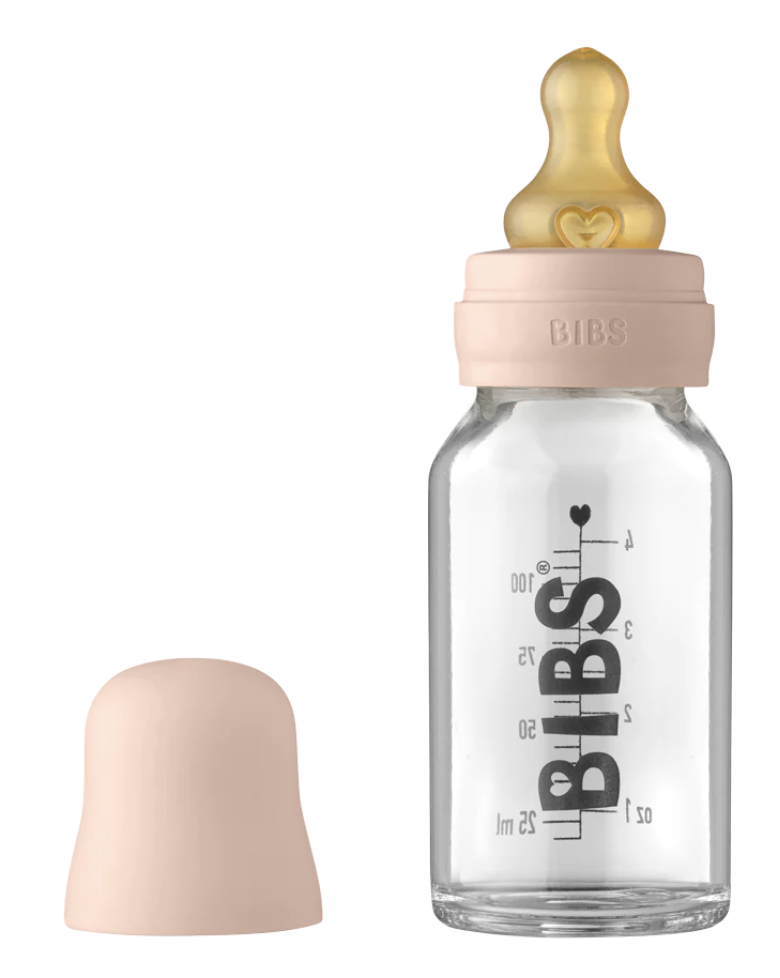
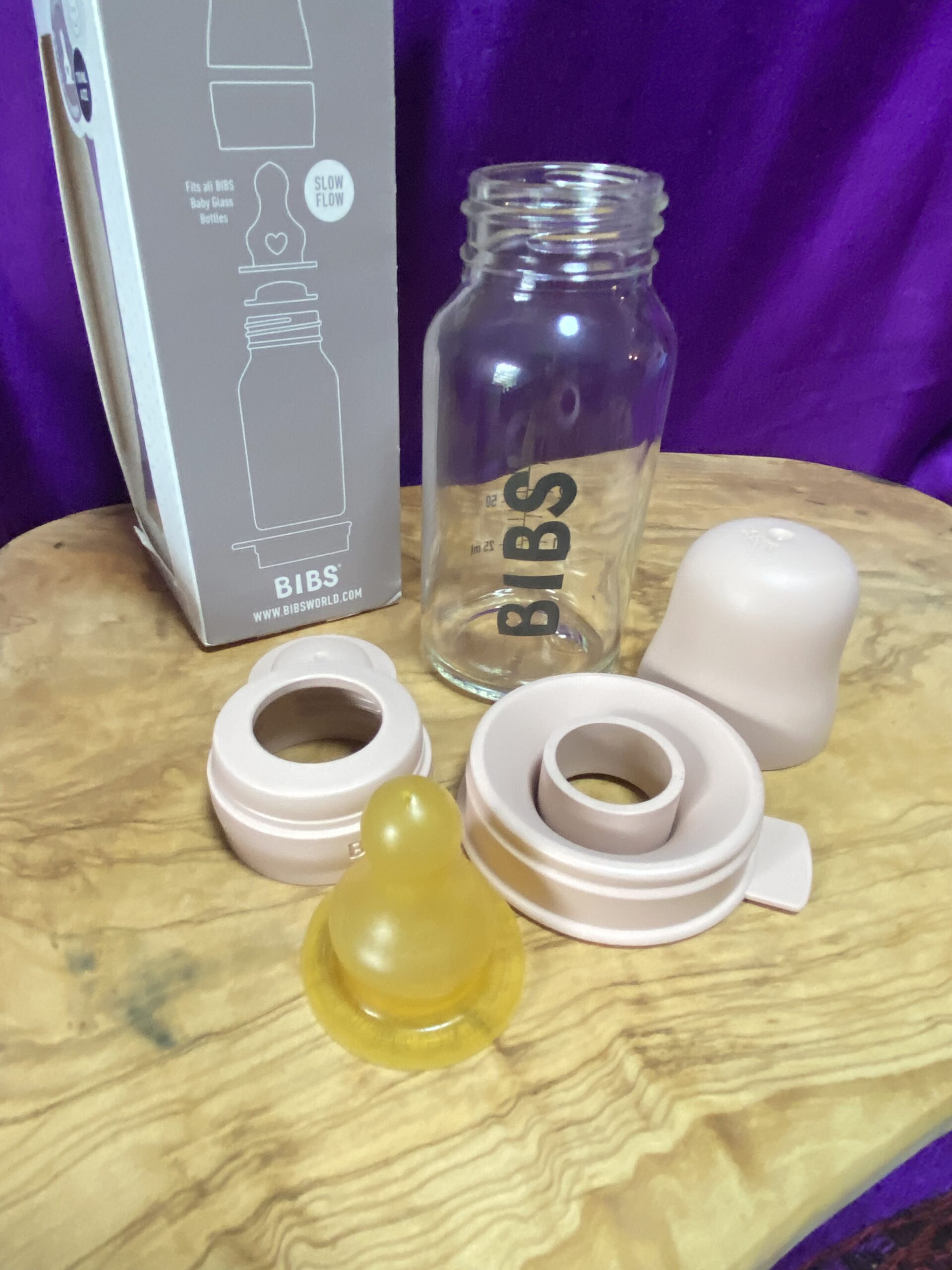
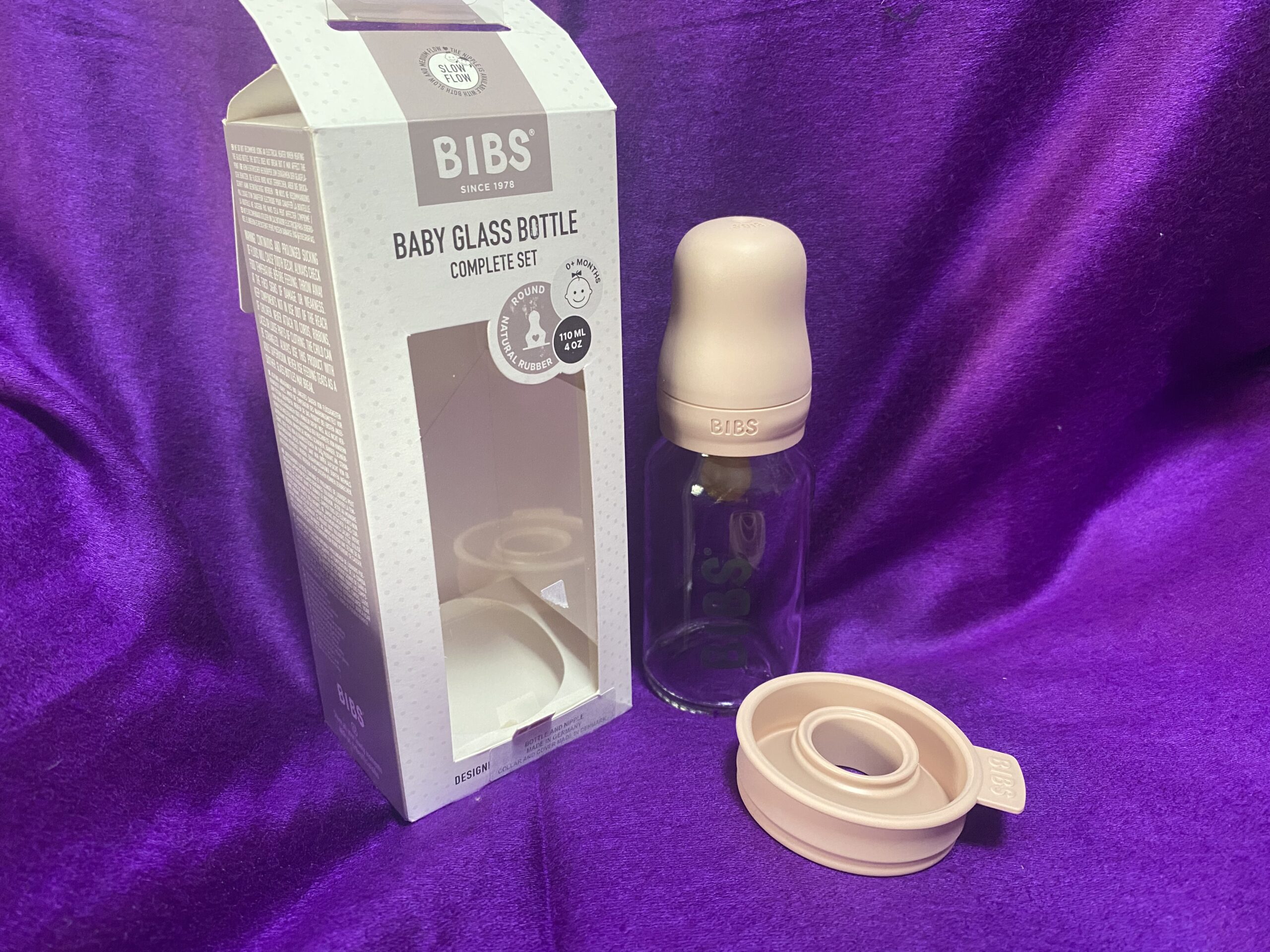
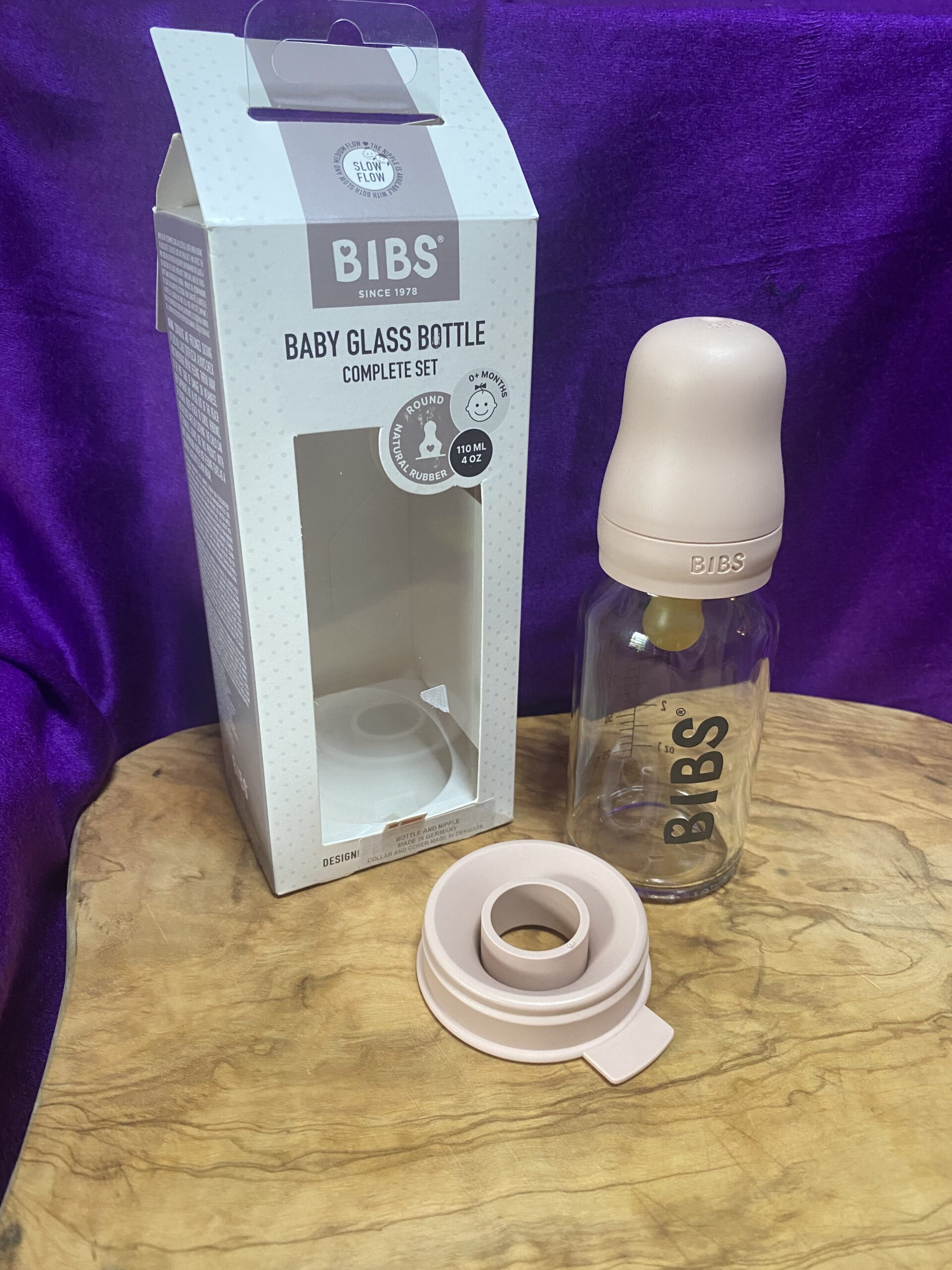
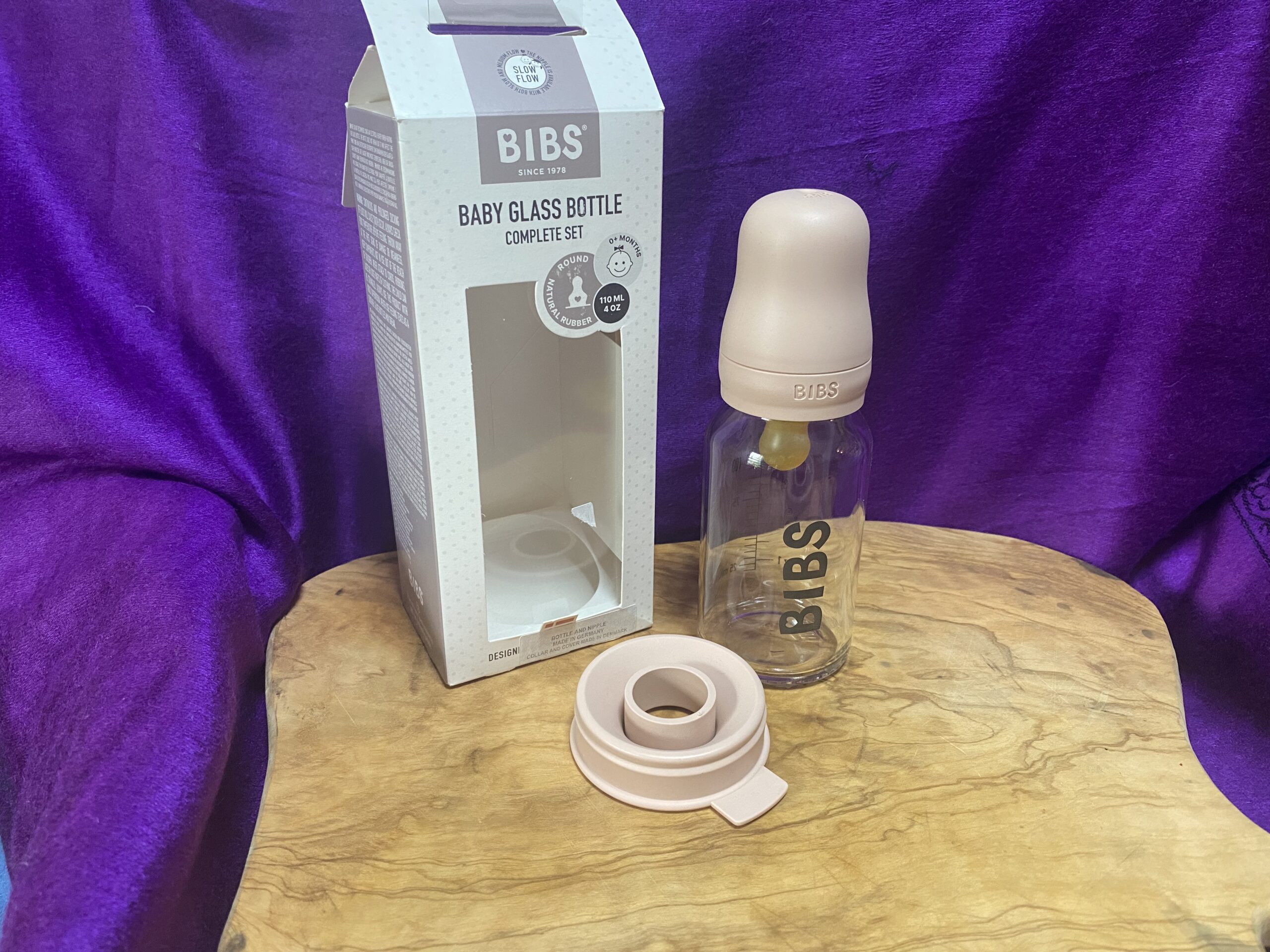
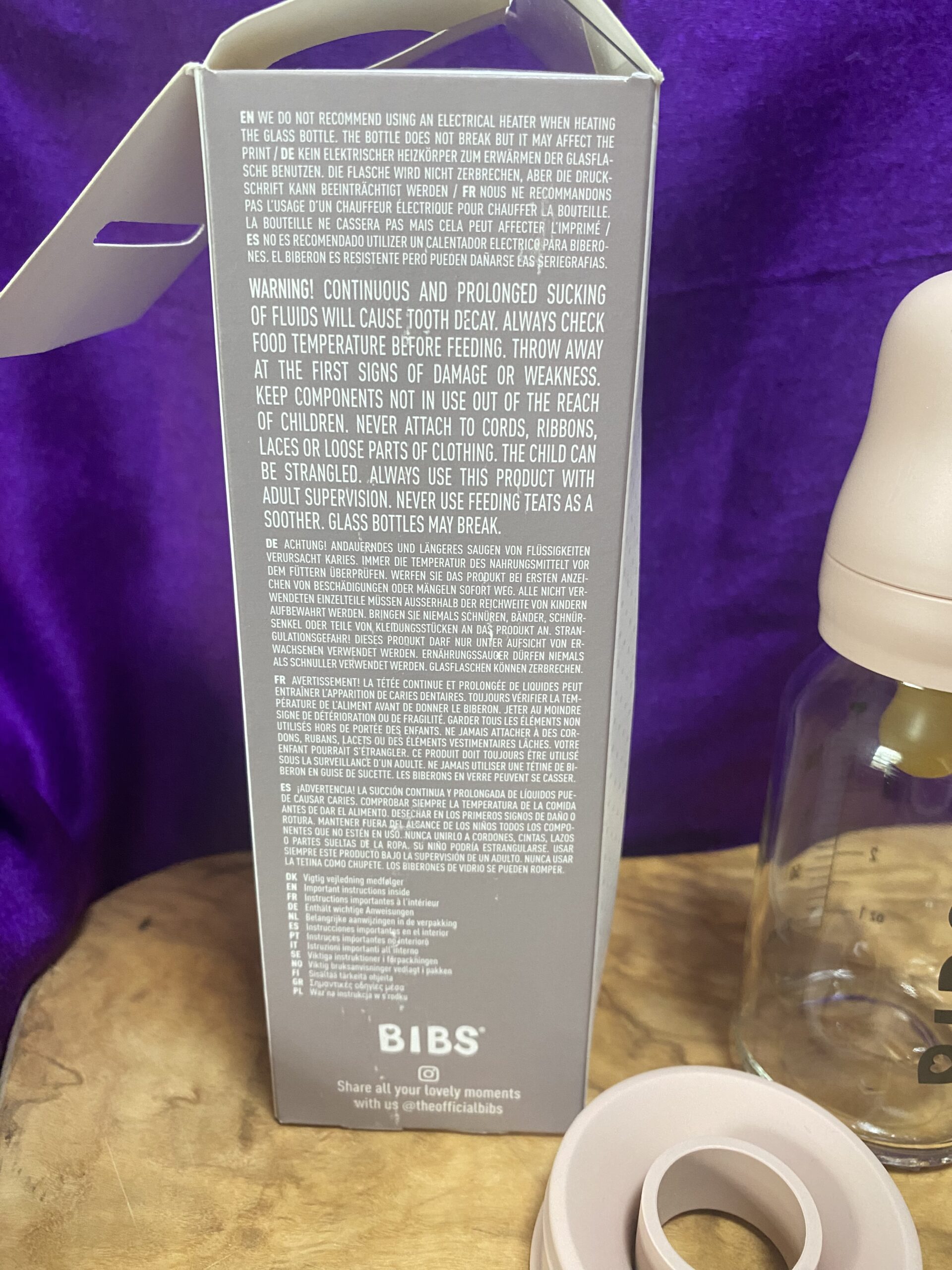
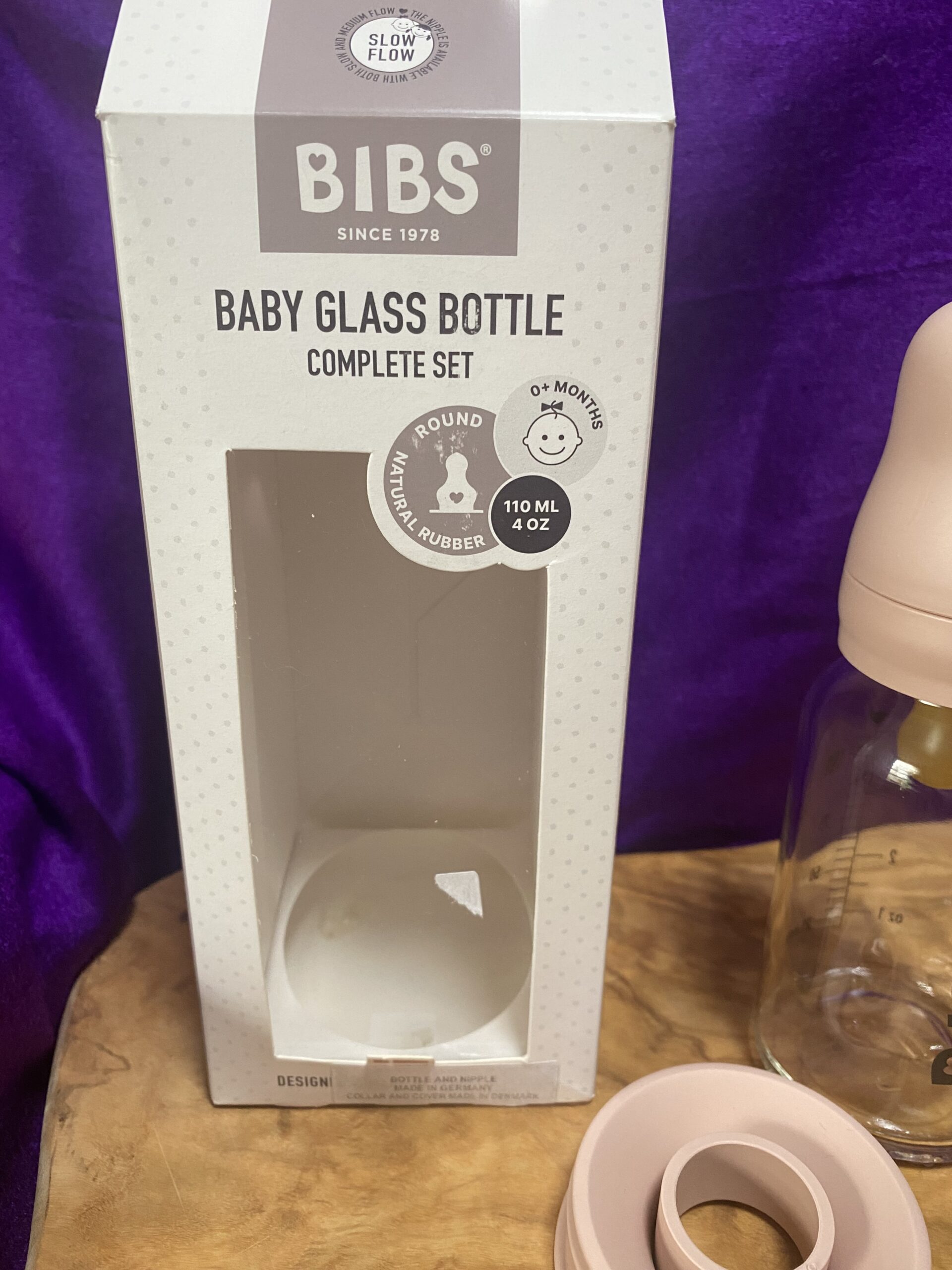
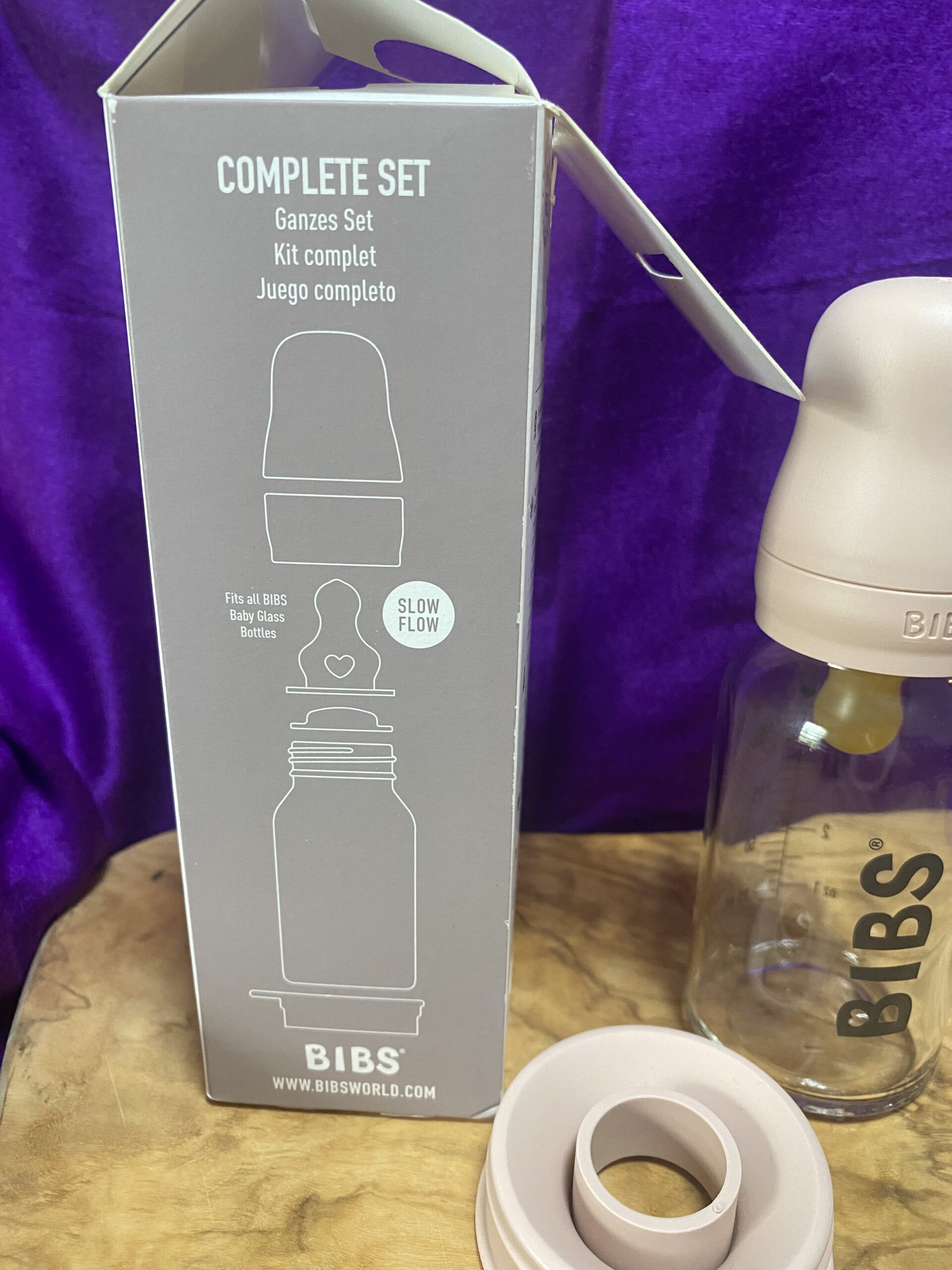
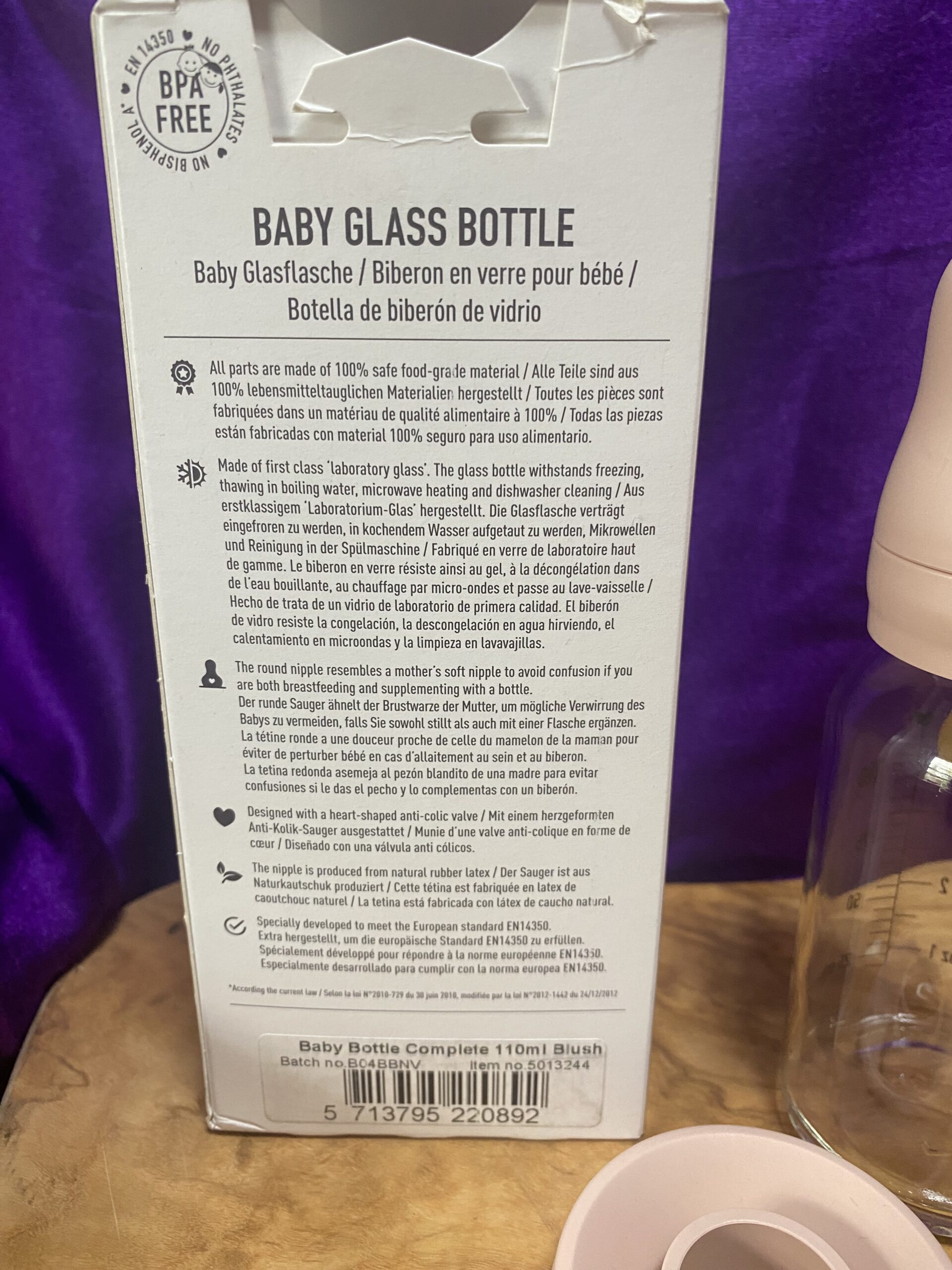
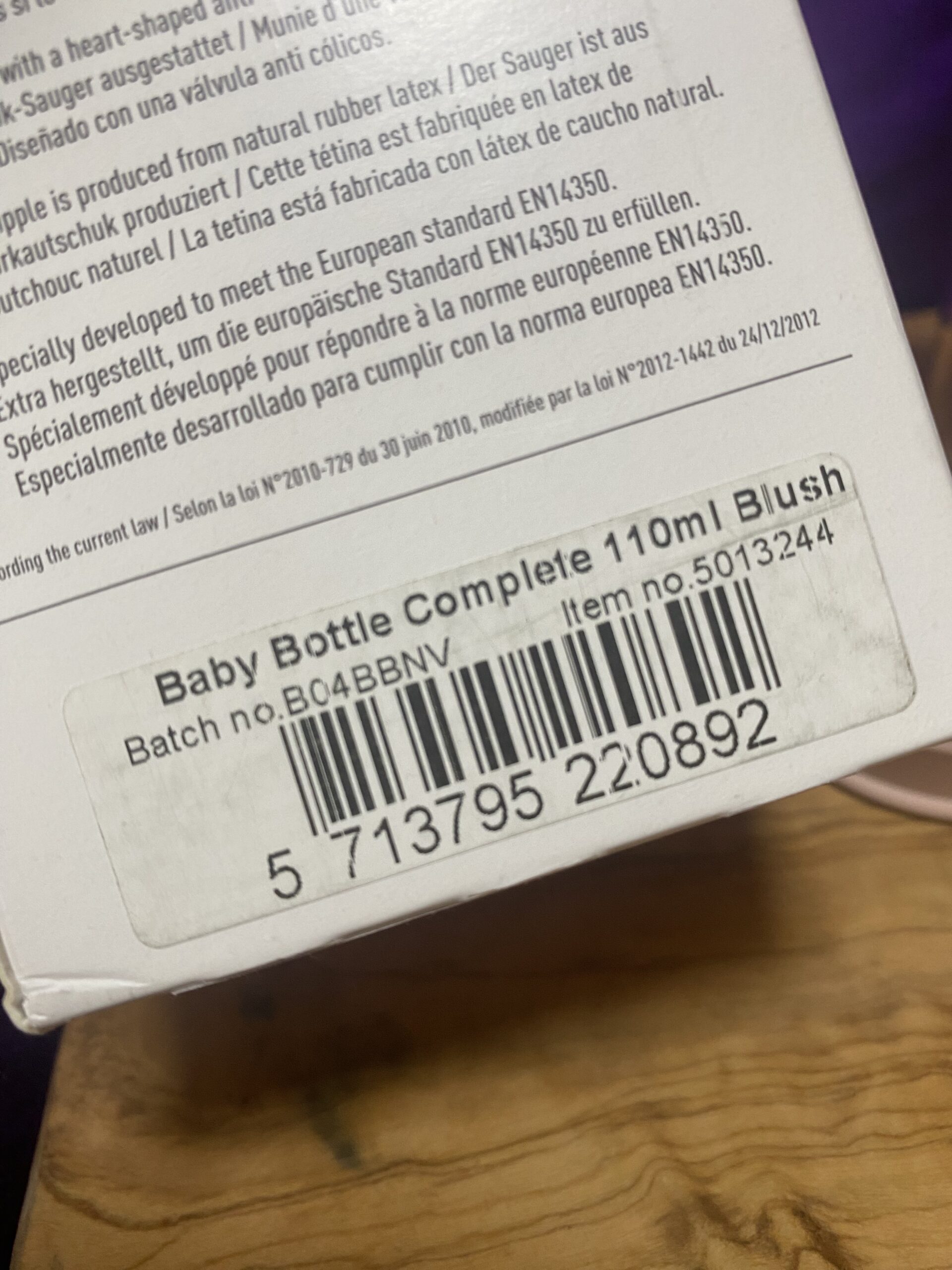


Have you tested any Dr Browns glass bottles?
Yes – put “Dr. Brown” in the search bar or look on the baby bottle guide pinned to the top of the website.
cazzo,It’s impossible to find a glass bottle with a nipple that is completely free of chemicals, neither on the glass, even in unpainted areas. That’s absurd!
Yup – quite.
Do you happen to have previously tested or know if the hevea rubber nipples are tested clean? I know you don’t recommend this brands bottles which I plan to steer clear from but I’m curious if their natural rubber nipples are at least clean/non toxic. I’m just trying to find more rubber nipples options out there aside from natursutten and bibs, in case I have any issues that others experience with specifically the natursutten. such as collapse nipple, no hole, too fast for a slow flow, etc. Please let me know thanks.
The Hevea natural rubber nipples have generally tested fairly clean.
T